The Country of the Blind and Other Stories is a collection of thirty-three short stories written by the English author H. G. Wells (1866–1946), first published by T. Nelson & Sons in 1911. In his introduction, Wells writes that the book is a collection of “all the short stories by me that I care for anyone to read again.” Twenty-eight of the stories were reprinted from earlier collections; the remaining five – “A Vision of Judgement”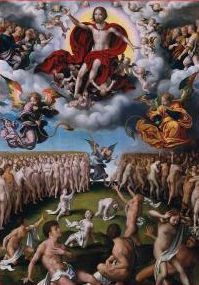 Short story by H. G. Wells published in 1899, about the Biblical day of judgement., “The Empire of the Ants”, “The Door in the Wall”
Short story by H. G. Wells published in 1899, about the Biblical day of judgement., “The Empire of the Ants”, “The Door in the Wall” Short story by H. G. Wells, first published in 1906, about a man's grieving for a magical garden he had found as a child, and desperately wants to find again., “The Country of the Blind”
Short story by H. G. Wells, first published in 1906, about a man's grieving for a magical garden he had found as a child, and desperately wants to find again., “The Country of the Blind”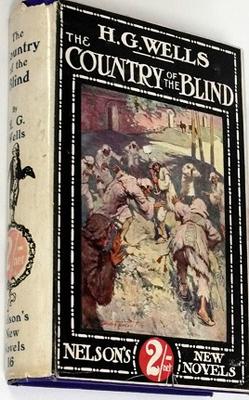 Short story by H. G. Wells first published in 1904, about the accidental discovery of a latter-day utopia where all the inhabitants are blind. and “The Beautiful Suit”
Short story by H. G. Wells first published in 1904, about the accidental discovery of a latter-day utopia where all the inhabitants are blind. and “The Beautiful Suit”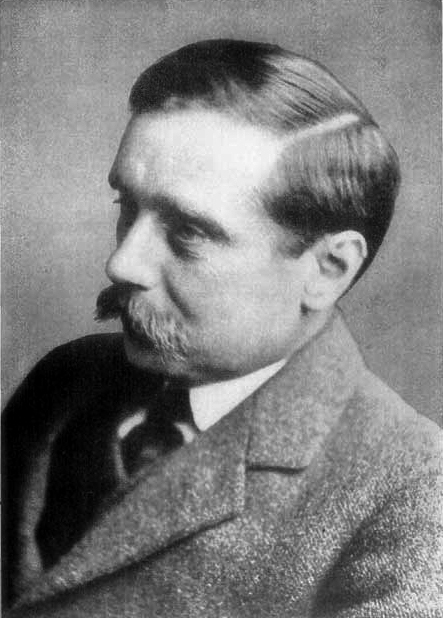 Short story by H. G. Wells, first published in Collier's Weekly in April 1909 under the title "A Moonlight Fable", in which an exquisitely tailored suit leads to the death of its owner. – appeared in book form for the first time.[1]
Short story by H. G. Wells, first published in Collier's Weekly in April 1909 under the title "A Moonlight Fable", in which an exquisitely tailored suit leads to the death of its owner. – appeared in book form for the first time.[1]
Contents
Stories are shown in the order in which they appear in the book, which is not necessarily the order in which they first appeared in print.
- The Jilting of Jane
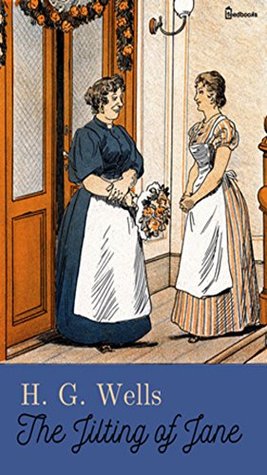 Short story by H. G. Wells first published in 1894, about an episode in the romantic life of a young maidservant who is engaged to be married.” (1894)
Short story by H. G. Wells first published in 1894, about an episode in the romantic life of a young maidservant who is engaged to be married.” (1894) - “The Cone
 Short story by H. G. Wells first published in 1895, about one man's revenge on an artist he suspects is having an affair with his wife.” (1895)
Short story by H. G. Wells first published in 1895, about one man's revenge on an artist he suspects is having an affair with his wife.” (1895) - “The Stolen Bacillus
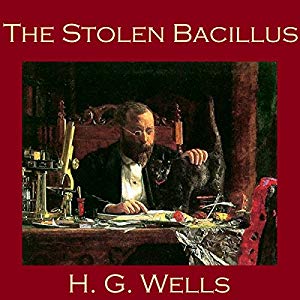 Short story by H. G. Wells first published in 1894, about an anarchist who steals what he believes to be a tube of cholera bacteria to poison London's water supply, but which is in reality harmless.” (1894)
Short story by H. G. Wells first published in 1894, about an anarchist who steals what he believes to be a tube of cholera bacteria to poison London's water supply, but which is in reality harmless.” (1894) - “The Flowering of the Strange Orchid
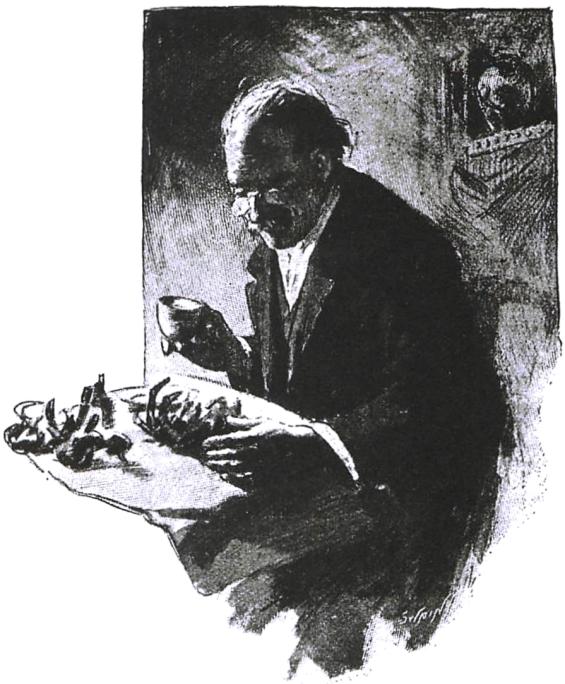 Short story by H. G. Wells first published in 1894. A collector of orchids grows an unknown species which develops aerial rootlets that attach themselves to his skin and suck his blood.” (1894)
Short story by H. G. Wells first published in 1894. A collector of orchids grows an unknown species which develops aerial rootlets that attach themselves to his skin and suck his blood.” (1894) - “In the Avu Observatory
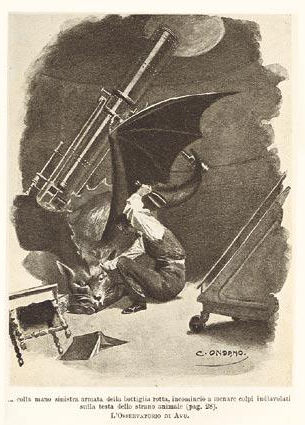 Short story by H. G. Wells, about an attack by a large bat-like creature on an assistant at an observatory in Borneo.” (1894)
Short story by H. G. Wells, about an attack by a large bat-like creature on an assistant at an observatory in Borneo.” (1894) - “Aepyornis Island
 Short story by H. G. Wells, first published in 1894, which can be read as a Robinsonade, a parable on the theme of loneliness, or simply a ripping yarn in the manner of Rudyard Kipling.” (1894)
Short story by H. G. Wells, first published in 1894, which can be read as a Robinsonade, a parable on the theme of loneliness, or simply a ripping yarn in the manner of Rudyard Kipling.” (1894) - “The Remarkable Case of Davidson’s EyesShort story by H. G. Wells published in 1895, about a researcher who, after stooping between the poles of a large electromagnet, becomes temporarily blind to the world around him, seeing only an island beach.” (1895)
- “The Lord of the Dynamos
 Short story by H. G. Wells first published in 1894. It concerns a stoker employed at the Camberwell electric railway workshops who becomes convinced that a large dynamo is a deity, and kills his superior in a religious frenzy.” (1894)
Short story by H. G. Wells first published in 1894. It concerns a stoker employed at the Camberwell electric railway workshops who becomes convinced that a large dynamo is a deity, and kills his superior in a religious frenzy.” (1894) - “The Moth
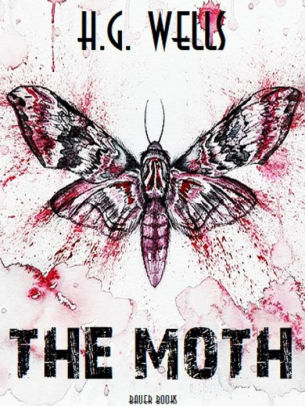 Short story by H. G. Wells first published in 1895. It concerns a bitter rivalry between two entomologists, ending with the death of one and the insanity of the other.” (1895)
Short story by H. G. Wells first published in 1895. It concerns a bitter rivalry between two entomologists, ending with the death of one and the insanity of the other.” (1895) - “The Treasure in the Forest
 Short story written by H. G. Wells and published in 1897, about the fate of two men who steal a treasure map from a Chinaman.” (1894)
Short story written by H. G. Wells and published in 1897, about the fate of two men who steal a treasure map from a Chinaman.” (1894) - “The Story of the Late Mr. Elvesham
 Short story by H. G. Wells first published in 1896, about a young man whose body is taken over by an elderly philosopher.” (1896)
Short story by H. G. Wells first published in 1896, about a young man whose body is taken over by an elderly philosopher.” (1896) - “Under the Knife
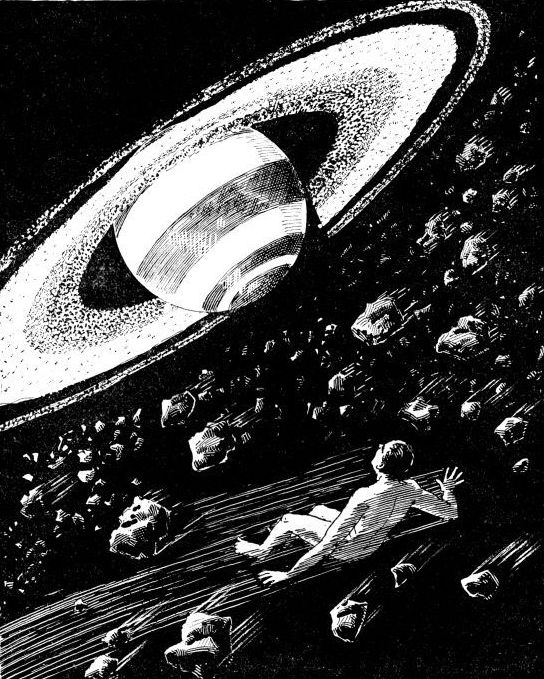 Short story by H. G. Wells first published in 1896, about an out of body experience while under anaesthetic.” (1896)
Short story by H. G. Wells first published in 1896, about an out of body experience while under anaesthetic.” (1896) - “The Sea Raiders
 Short story by H. G. Wells, first published in 1896, about a raid by an unknown species of octopus-like creatures on the south coast of England.” (1896)
Short story by H. G. Wells, first published in 1896, about a raid by an unknown species of octopus-like creatures on the south coast of England.” (1896) - “The Obliterated Man
 Short story by H. G. Wells first published in 1895, about a shy young man who becomes a drama critic, and the effect that decision has on his personality.” (1895)
Short story by H. G. Wells first published in 1895, about a shy young man who becomes a drama critic, and the effect that decision has on his personality.” (1895) - “The Plattner Story
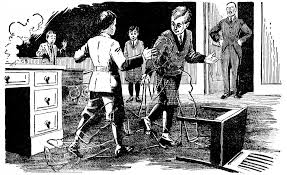 Short story by H. G. Wells published in 1896, about a chemistry teacher who causes an explosion that propels him into another world.” (April 1896)
Short story by H. G. Wells published in 1896, about a chemistry teacher who causes an explosion that propels him into another world.” (April 1896) - “The Red Room
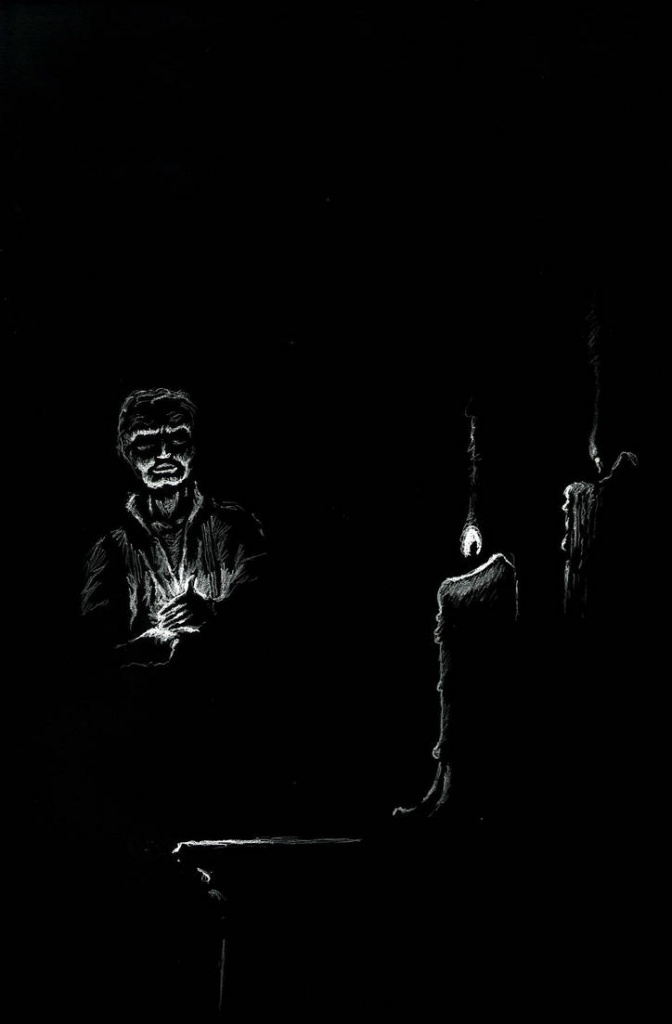 Short story by H. G. Wells first published in 1896, a horror story in the manner of Edgar Allan Poe.” (1896)
Short story by H. G. Wells first published in 1896, a horror story in the manner of Edgar Allan Poe.” (1896) - “The Purple Pileus
 Short story by H. G. Wells first published in 1896, about a struggling small shopkeeper whose life is transformed after consuming some magic mushrooms.” (1896)
Short story by H. G. Wells first published in 1896, about a struggling small shopkeeper whose life is transformed after consuming some magic mushrooms.” (1896) - “A Slip Under the Microscope
 Short story by H. G. Wells first published in 1896, about the ethical dilemma faced by a student who inadvertently cheats during his botany exam.” (1896)
Short story by H. G. Wells first published in 1896, about the ethical dilemma faced by a student who inadvertently cheats during his botany exam.” (1896) - “The Crystal Egg
 Short story by H. G. Wells first published in 1897, about a dealer in antiquities who discovers a communication device between Earth and Mars.” (1897)
Short story by H. G. Wells first published in 1897, about a dealer in antiquities who discovers a communication device between Earth and Mars.” (1897) - “The Star
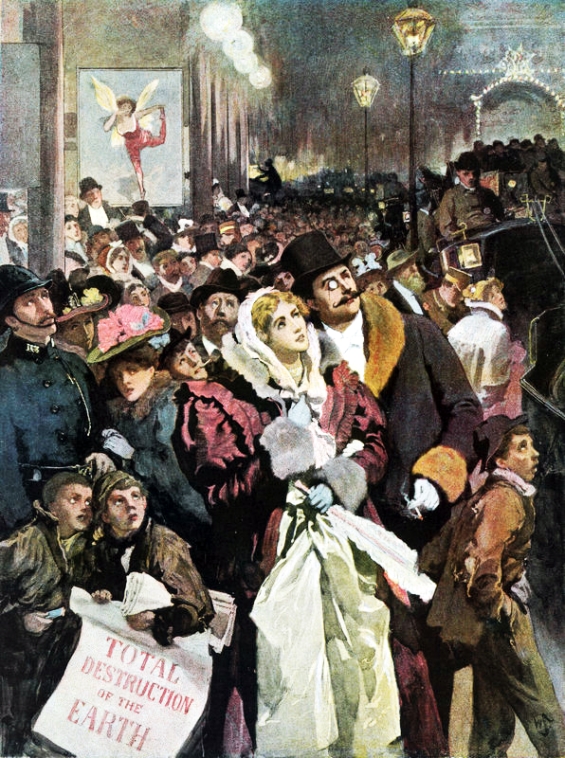 Short story by H. G. Wells published in 1897, about a near collision between a comet from outer space and the Earth.” (1897)
Short story by H. G. Wells published in 1897, about a near collision between a comet from outer space and the Earth.” (1897) - “The Man Who Could Work Miracles
 Short story by H. G. Wells about a man who is granted the power to do anything merely by willing it to happen.” (1898)
Short story by H. G. Wells about a man who is granted the power to do anything merely by willing it to happen.” (1898) - “A Vision of Judgment
 Short story by H. G. Wells published in 1899, about the Biblical day of judgement.” (1899)
Short story by H. G. Wells published in 1899, about the Biblical day of judgement.” (1899) - “Jimmy Goggles the God
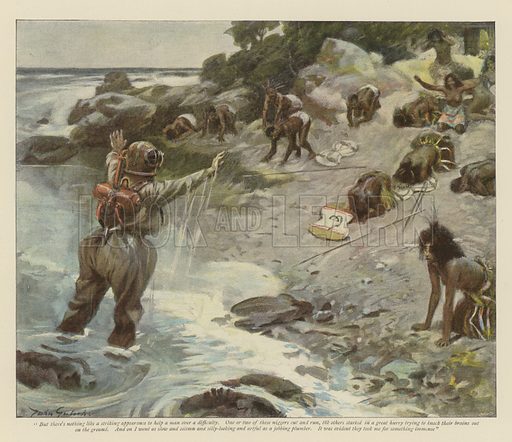 Short story by H. G. Wells first published in 1898, about a treasure hunter who because of his diving suit is mistaken for a god.” (1898)
Short story by H. G. Wells first published in 1898, about a treasure hunter who because of his diving suit is mistaken for a god.” (1898) - “Miss Winchelsea’s HeartShort story by H. G. Wells first published in 1898, about a snobbish young woman's rejection of a young man's advances because of what she perceives to be his absurd surname, Snooks.” (1898)
- “A Dream of Armageddon
 Anti-war short story by H. G. Wells published in 1901.” (1901)
Anti-war short story by H. G. Wells published in 1901.” (1901) - “The Valley of Spiders
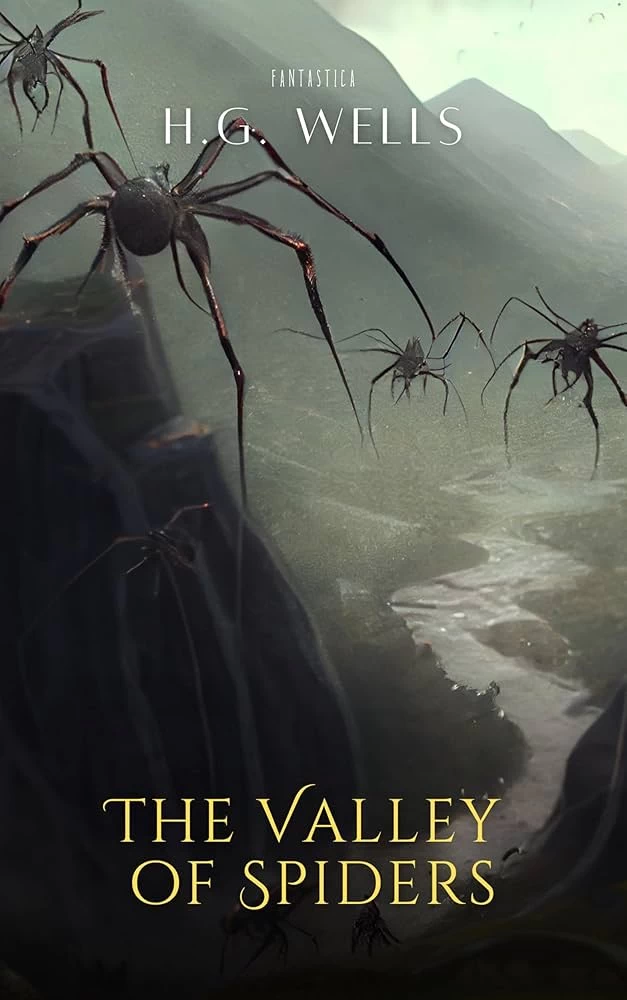 Short story by H. G. Wells published in 1903, about three men who are attacked by giant spiders while pursuing a half-caste girl through a desolate valley.” (1903)
Short story by H. G. Wells published in 1903, about three men who are attacked by giant spiders while pursuing a half-caste girl through a desolate valley.” (1903) - “The New Accelerator
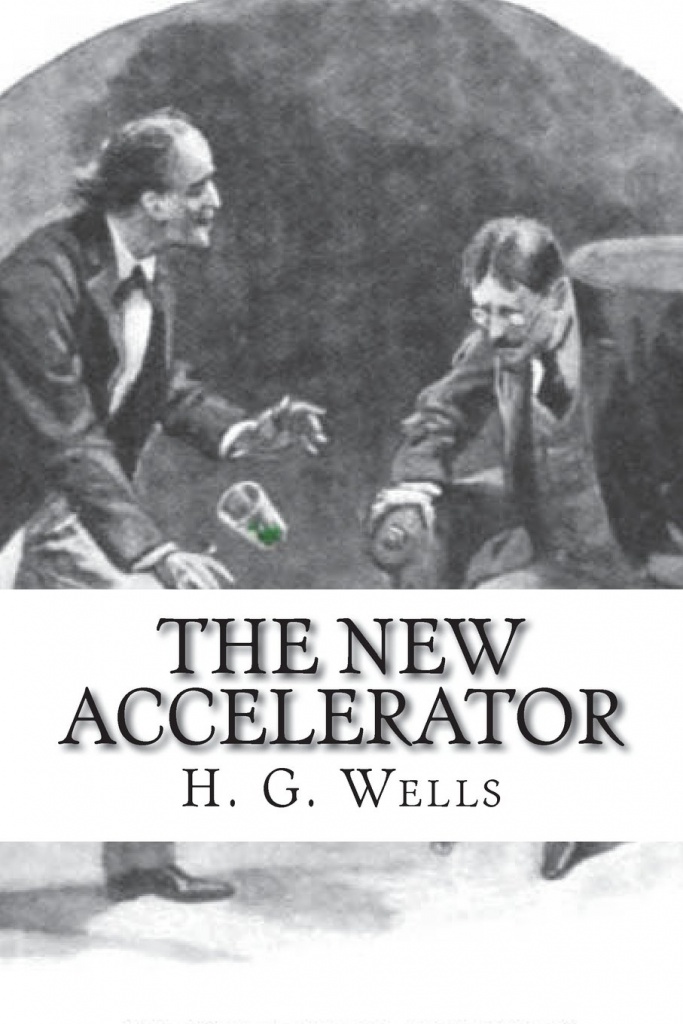 Short story by H. G. Wells published in 1901, concerning the effects of a fictional drug designed to speed up the human nervous system.” (1901)
Short story by H. G. Wells published in 1901, concerning the effects of a fictional drug designed to speed up the human nervous system.” (1901) - “The Truth About Pyecraft
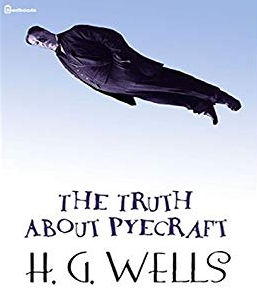 Short story by H. G. Wells published in 1903, about a fat man who loses so much weight that he begins to float.” (1903)
Short story by H. G. Wells published in 1903, about a fat man who loses so much weight that he begins to float.” (1903) - “The Magic Shop
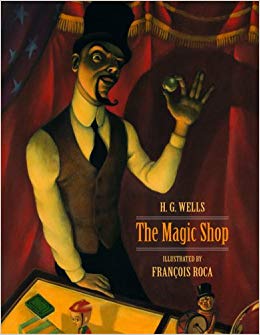 Short story by H. G. Wells first published in 1903, about a visit by a young boy and his father to a shop selling disturbingly realistic magical illusions.” (1903)
Short story by H. G. Wells first published in 1903, about a visit by a young boy and his father to a shop selling disturbingly realistic magical illusions.” (1903) - “The Empire of the Ants
 Short story by H. G. Wells first published in 1905, about a plague of large intelligent ants, which pose a threat to mankind's continued existence.” (1905)
Short story by H. G. Wells first published in 1905, about a plague of large intelligent ants, which pose a threat to mankind's continued existence.” (1905) - “The Door in the Wall
 Short story by H. G. Wells, first published in 1906, about a man's grieving for a magical garden he had found as a child, and desperately wants to find again.” (1906)
Short story by H. G. Wells, first published in 1906, about a man's grieving for a magical garden he had found as a child, and desperately wants to find again.” (1906) - “The Country of the Blind
 Short story by H. G. Wells first published in 1904, about the accidental discovery of a latter-day utopia where all the inhabitants are blind.” (1904)
Short story by H. G. Wells first published in 1904, about the accidental discovery of a latter-day utopia where all the inhabitants are blind.” (1904) - “The Beautiful Suit
 Short story by H. G. Wells, first published in Collier's Weekly in April 1909 under the title "A Moonlight Fable", in which an exquisitely tailored suit leads to the death of its owner.” (1909)
Short story by H. G. Wells, first published in Collier's Weekly in April 1909 under the title "A Moonlight Fable", in which an exquisitely tailored suit leads to the death of its owner.” (1909)
See also
- List of works by H. G. Wells
 List of publications written by H. G. Wells during the more than fifty years of his literary career.
List of publications written by H. G. Wells during the more than fifty years of his literary career.
External links
- The Country of the Blind and Other Stories at Project Gutenberg
